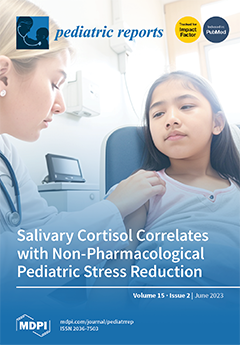Background: Acute kidney injury occurs commonly in the Neonatal Intensive Care Unit and is associated with increased mortality and morbidity. We report a case of a neonate with congenital heart disease who developed acute kidney injury after cardiac surgery, administration of iodinated contrast
[...] Read more.
Background: Acute kidney injury occurs commonly in the Neonatal Intensive Care Unit and is associated with increased mortality and morbidity. We report a case of a neonate with congenital heart disease who developed acute kidney injury after cardiac surgery, administration of iodinated contrast media for cardiac catheterization, and a combination of nephrotoxic drugs. Case report: A term neonate without a prenatal diagnosis of congenital heart disease and with a good postnatal transition was transferred at 13 days of life to the MS Curie Emergency Hospital for Children, Newborn Intensive Care Unit, from a regional hospital where he was admitted at 10 days of life with severe general status, respiratory distress, cyanosis, and arterial hypotension. The cardiac ultrasound detected critical aortic valve stenosis, hypoplastic descending aorta, acute heart failure, and pulmonary hypertension. The patient was intubated and mechanically ventilated and received antibiotherapy (meropenem, vancomycin, and colistin), inotropic and vasoactive support (epinephrine, norepinephrine, dopamine, and milrinone), and diuretic support (furosemide, aminophylline, and ethacrynic acid). A balloon aortic valvuloplasty was performed several hours after admission, but after two days the patient required reintervention by open heart surgery due to relapsing severe aortic stenosis. He developed oligo-anuria, generalized edema, and altered renal function tests on the second postoperative and fourth day post-contrast media administration. Continuous renal replacement therapy was initiated for 75 h, leading to almost instant improvement in blood pressure, then diuresis and creatinine levels. The patient required long-term treatment for heart, respiratory, and liver failure. He was discharged at almost four months of age with normal renal function tests, blood pressure, and good urine output without diuretic support. The literature review indicates that contrast-associated acute kidney injury (CA-AKI) requiring continuous renal replacement therapy is rare. Conclusions: Our current case proves that iodinated contrast media administration in a neonate with concomitant insults, such as cardiac surgery for a specific pathology, aortic stenosis, coarctation, arch stenosis, arterial hypotension, and administration of nephrotoxic drugs, may lead to severe kidney injury.
Full article






